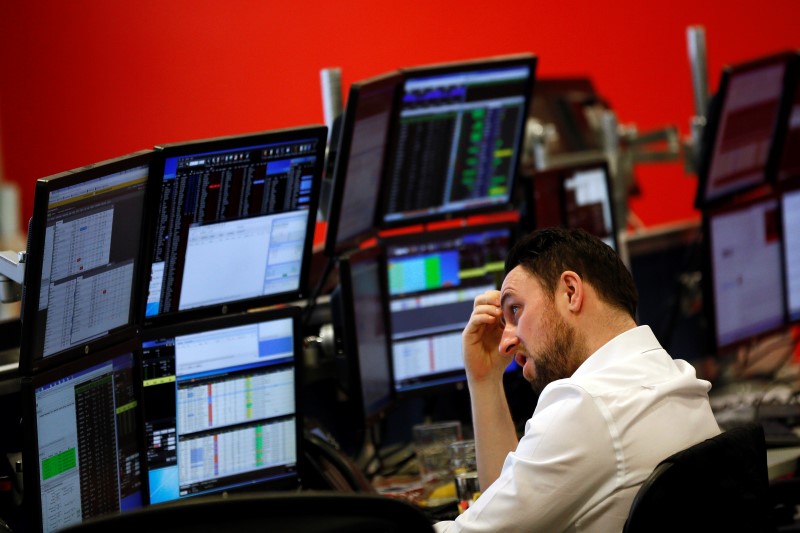By Caroline Valetkevitch
NEW YORK (Reuters) -Global stock indexes were mostly higher on Tuesday, with shares of AI chipmaker Nvidia (NASDAQ:) bouncing after a three-day sell-off, while the dollar rose slightly against the Japanese yen.
Nvidia shares ended up 6.8%. The Nasdaq rose more than 1%, also ending a three-day losing streak, while the technology and communications services sectors posted the biggest gains among the S&P 500 sectors.
The excitement about artificial intelligence has boosted stocks like Nvidia and helped the U.S. stock market reach recent record highs, but it remains to be seen if that will continue, and for how long.
The chipmaker had skyrocketed last week to briefly become the world’s largest company, but fell about 16% from last Thursday’s peak to this Monday’s close.
“It’s another day of fairly tight stock markets,” said Chad Oviatt, director of investment management at The Huntington National Bank in Akron, Ohio.
“The Mag 7 seems to be pushing things… and that’s been a theme all year,” he said, referring to the Magnificent 7 group of technology-related stocks, which includes Nvidia. “Many market participants are simply waiting for further broadening” of the market.
Investors are also bracing for Friday’s personal consumption expenditure price index data, which could provide further clues about the inflation picture and when the Federal Reserve might start cutting rates.
They are also awaiting early elections in France starting this weekend and the first US presidential debate on Thursday.
Shares fell 299.05 points, or 0.76%, to 39,112.16, while the S&P 500 gained 21.43 points, or 0.39%, to 5,469.30 and gained 220.84 points, or 1.26 %, to 17,717.65.
After the closing bell, shares of FedEx (NYSE:) rose more than 15% following the release of its results and 2025 earnings forecast, above analyst estimates. The stock closed 0.1% lower during the regular session.
The MSCI index for shares around the world rose 2.49 points, or 0.31%, to 803.77. The index fell 0.23%.
The U.S. dollar rose, supported in part by hawkish comments from a Fed official.
Fed Governor Michelle Bowman on Tuesday reiterated her view that keeping key rates stable “for some time” will likely be enough to bring inflation under control. She also reiterated her willingness to increase financing costs if necessary.
The yen kept traders on alert for signs of further intervention from Japanese authorities to support the currency as it traded just above a two-month low of around 160 per dollar.
The rate hit a low against the euro of 171.49 on Monday as pressure on the currency increased thanks to interest rates in Japan, which remain much lower than in the United States and Europe.
Against the Japanese yen, the dollar rose 0.06% to 159.68 on Tuesday.
The , which measures the dollar against a basket of currencies, rose 0.11% to 105.63, while the euro fell 0.19% to $1.0712.
In government bonds, the inversion of the yield curve between two-year and ten-year government bonds deepened to more than 50 basis points for the first time this year.
It partially returned after strong demand at a two-year auction.
Oil prices fell on concerns about demand after a slow start to the US summer season.

futures for August fell $1 to $85.01 a barrel, while futures fell to $80.83, down 80 cents.
fell 0.6% to $2,318.82 an ounce.


